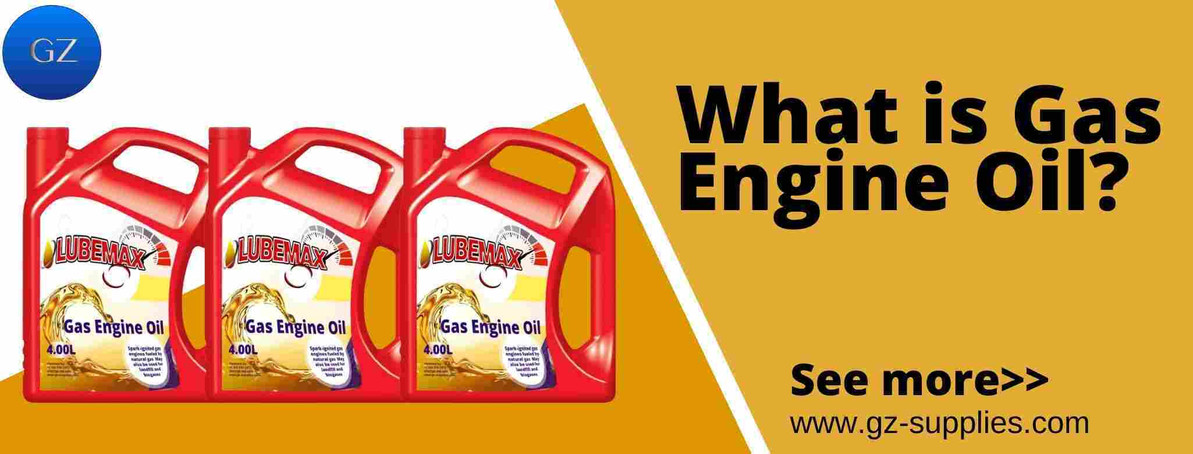What is Gas Engine Oil?
Generally in modern usage, the term gas engine refers to a heavy-duty industrial engine capable of running continuously at full load for periods approaching a high fraction of 8,760 hours per year, unlike a gasoline automobile engine, which is lightweight, high-revving and typically runs for no more than 4,000 hours in its entire life. Typical power ranges from 10 kW (13 hp) to 4 MW (5,364 hp).
The use of gas engines for power generation has become more widespread in recent years. Their growing use has accelerated both commercial and technical demands on gas engine lubricants, and encouraged engine operators to increasingly demand performance expectations beyond the minimum required by the manufacturers.
All engine oils are lubricants, a blend of two components – base oils and additives, basically used in mechanical engines to reduce tear and wear of machines. Every oil is blended to meet the required lubricant performance of the legislation standards, together with the application, whether it is an engine, transmission or hydraulic oil. Lubricants for large internal combustion engines used in stationary applications. These types of engines are extremely widespread as generators of electricity or used in the environmental sector because they allow the recovery cycle of the most varied types of waste; thanks to the use, as fuel, of the gases originated from landfills, wastewater treatment plants or agricultural activities.
Factors that have enhanced Gas Engine Oil(GEO) performance
There are factors that have pushed traditional gas engine oil (GEO) formulations to their limit and have highlighted the performance limitations of traditional additive solutions. A careful rebalancing of advanced additive and base oil systems is set to deliver improved performance over traditional lubricants to meet the challenges of current and future gas engine design.
To ensure trouble-free operation of their engines, engine manufacturers essentially dictated minimum performance requirements for GEOs which consequently evolved with engine design.
However, today’s engine operators are also demanding performance features beyond those minimum levels to enable them to achieve cost-effective engine operation. While the engine manufacturers’ requirements are mandatory, those of the engine operators allow lubricant manufacturers to differentiate their products on performance grounds.
Trends in Recent times
In an effort to increase engine load and mechanical efficiency, there have been several recent developments in gas engine technology. One key improvement is the increased use of electronics, possibly combined with dual fuel operation, for better combustion control. This involves ignition by diesel fuel rather than a spark plug.
So far, these advanced designs have not led to alteration in the manufacturers’ requirements for the lubricant. However, future changes will need to support control of emissions, exhaust gas deposits and knocking.
Engine Operators’ Requirements
Engine operators expect more from a lubricant than simply trouble-free engine operation. Because engine components have become more durable, it is often the end of the lubricant’s lifetime that requires maintenance work to be performed during scheduled outages. A lubricant’s ability to reach very long drain intervals (4,000 hours) in any engine model is highly desirable.
Because traditional additives and conventional base oil systems have reached their limit in that respect, particularly in the smaller engines, the focus has turned to using higher performance base oils. However, traditional additive chemistries often struggle, particularly in terms of deposit control, in these higher performance base oils.
Like any engine oil, a gas engine oil is a combination of additives and base oil. Given the importance of oxidation/nitration control on the performance assessment of a GEO, appropriate selection of both is essential.
Engine Manufacturers’ Requirements
One of the key requirements of engine manufacturers who need trouble-free operation is the avoidance of knocking, which can lead to the destruction of the cylinder unit. In large gas engines, the formation of deposits in the combustion bowl is known to initiate knocking. Lubricants designed with low sulfated ash content reduce this risk.
Gas engine manufacturers specify the range of sulfated ash content that is suitable for each engine they market. This ranges from less than 0.1 percent ash by weight - known as ashless, less than 0.5 percent ash by weight described as low ash, through less than 1 percent ash by weight referred to medium ash, up to greater than 1 percent ash by weight regarded as high ash.
To endorse any lubricant, engine manufacturers require proof of performance in field trials from 4,000 to 10,000 hours in an approved installation. The main areas of interest for the field performance of a GEO include:

Resistance to Oxidation and Nitration
Gas Engine Oils (GEOs) need to have the ability to neutralize the acidic by-products of oxidation and nitration. The effects are visible on lubricant parameters such as viscosity, rise in acid number, drop in base number, infrared analysis of used oil, and on engine parameters such as engine cleanliness and bearing corrosion.
Control of Deposits
The oil must deliver virtually, no deposit to the combustion bowl given the engine sensitivity to knocking.
Control of Corrosion: This is particularly important when the gas is especially corrosive, and where engines are fitted with bearing technology known for its sensitivity to corrosion.
These data give formulators the information they need to design new GEOs and are provided as guidelines to engine operators to indicate drain intervals. Assurance of these guidelines requires continuous condition monitoring by used oil analysis.
Example of a gas engine oil is Shell Mysella gas engine oil and LubeMax gas engine oil
Contact us for your high performing gas engine oils automotive engine oil and other quality lubricants.
Recent Posts
-
Why Serious Mechanics Are Switching to Japanese-Made Shinano Air Tools
Japanese-Made Shinano Air Tools Key takeaway: Shinano’s tight-tolerance, twin-hammer designs d …Apr 24, 2025 -
Top 10 Hand Tool Brands for Professionals
Introduction When it comes to professional hand tools, quality, durability, and reliability are para …Apr 23, 2025 -
HOW DOES CORROSION INHIBITOR WORK
Introduction Corrosion has posed a lot of problems to various companies and industries; by interfer …Apr 22, 2025



